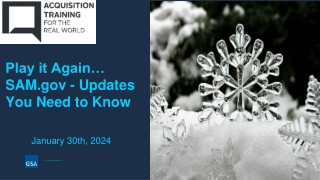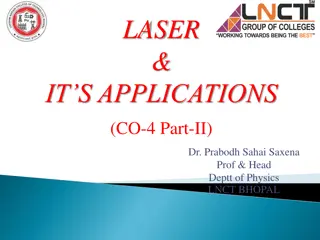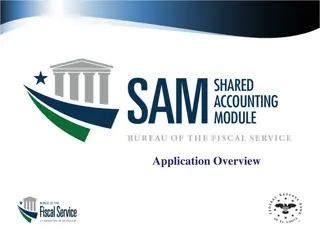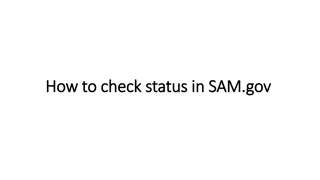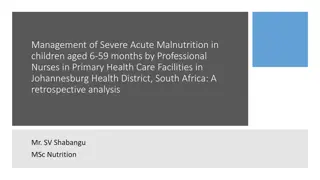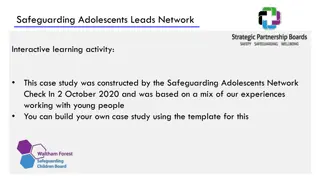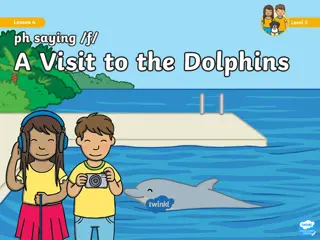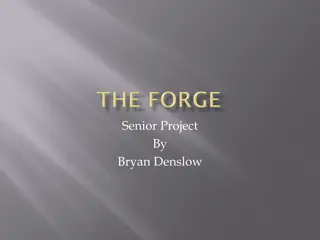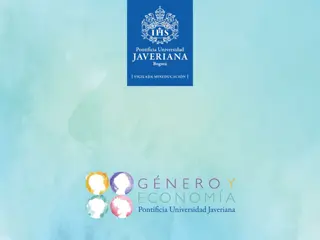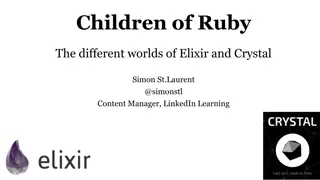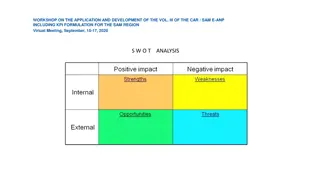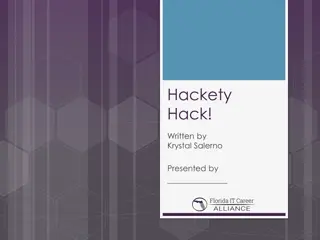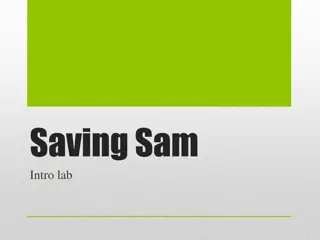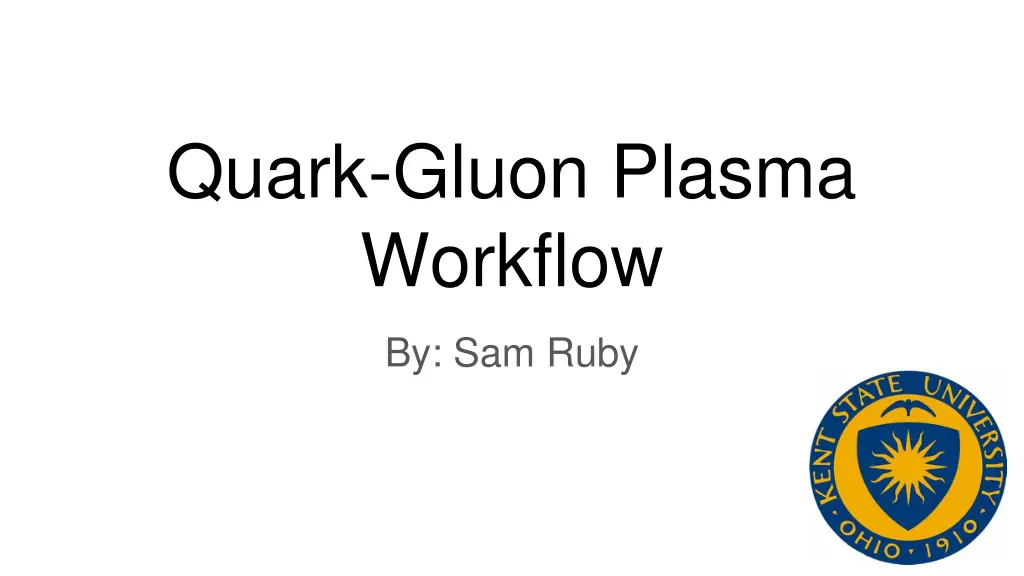
Understanding Quark-Gluon Plasma: Research Workflow and Findings
Explore the research project on quark-gluon plasma conducted by Dr. Michael Strickland. Discover the scientific workflow, challenges faced, benefits gained, and final results of this intriguing study. Dive into the world of theoretical physics and scientific research with this comprehensive presentation.
Download Presentation

Please find below an Image/Link to download the presentation.
The content on the website is provided AS IS for your information and personal use only. It may not be sold, licensed, or shared on other websites without obtaining consent from the author. If you encounter any issues during the download, it is possible that the publisher has removed the file from their server.
You are allowed to download the files provided on this website for personal or commercial use, subject to the condition that they are used lawfully. All files are the property of their respective owners.
The content on the website is provided AS IS for your information and personal use only. It may not be sold, licensed, or shared on other websites without obtaining consent from the author.
E N D
Presentation Transcript
Quark-Gluon Plasma Workflow By: Sam Ruby
Outline of Presentation 1. Abstract 2. Workflow Diagram 3. Resources and References 4. Difficulties Faced 5. Benefit of Project
What is the project? This research project was conducted with Dr. Michael Strickland and on the topic of research regarding the quark gluon plasma and its existence. This workflow will cover the processes used in researching the quark gluon plasma, some of its properties, and the significance of its research. Dr. Strickland and his team collide particles together at near light speeds almost a million times a second, recreating the early stages of the universe for observation. In this slideshow, I will be detailing the workflow diagram of his scientific process, showing the steps he has to take in new research and how he can go about experimentation. Additionally, I will be showing a few references and images to go along with this workflow. Finally, I will go over the difficulties I faced and the benefit of this project in the final two slides.
Workflow of Scientific Research from Dr. Strickland Research already done work and read experimental data Test code against several limiting cases ie already known cases read many papers to prepare for research Identify unresolved question Write lines of code to run the solution Theorize a solution Do analytic calculations Deploy code in shell at the Ohio supercomputer write research paper Submit to archive Add figures Working? Compare data Gather results Wait several months and receive referee reports Complete project and start new research Wait for public comments Does referee request changes? Submit to journal
Resources and References https://arxiv.org/abs/2302.11826 Papers on bottomonium and quark suppression https://arxiv.org/abs/2205.10289 (Very good nighttime reading) This is the results of these steps, aka the final completed paper.
Difficulties Faced Some difficulties I faced were the gap of my understanding in theoretical physics as well as a lot of new vocab words like Quark-Gluon plasma, bottomonium, etc. These difficulties were made easier by my own personal interest and research on the topic as well as reading the research papers. It was an incredibly fun and interesting experience! Total project time: 97.6 hours Visualization of QGP
Benefits of Project The benefits of this workflow project are that it allows outside observers to look in and see an efficiently organized spreadsheet with all information they would need to jump into the project wherever needed. It provides clarity and ease of understanding to those who are interested in delving deeper into the topic or perhaps wish to work on it. Interpretation of Bottomonium vector states
Conclusion This project was fun to work on and learn about! I thoroughly enjoy quantum mechanics and learning about the different sides of theoretical physics. Overall, I genuinely look forward to seeing more of Dr. Strickland s research.

